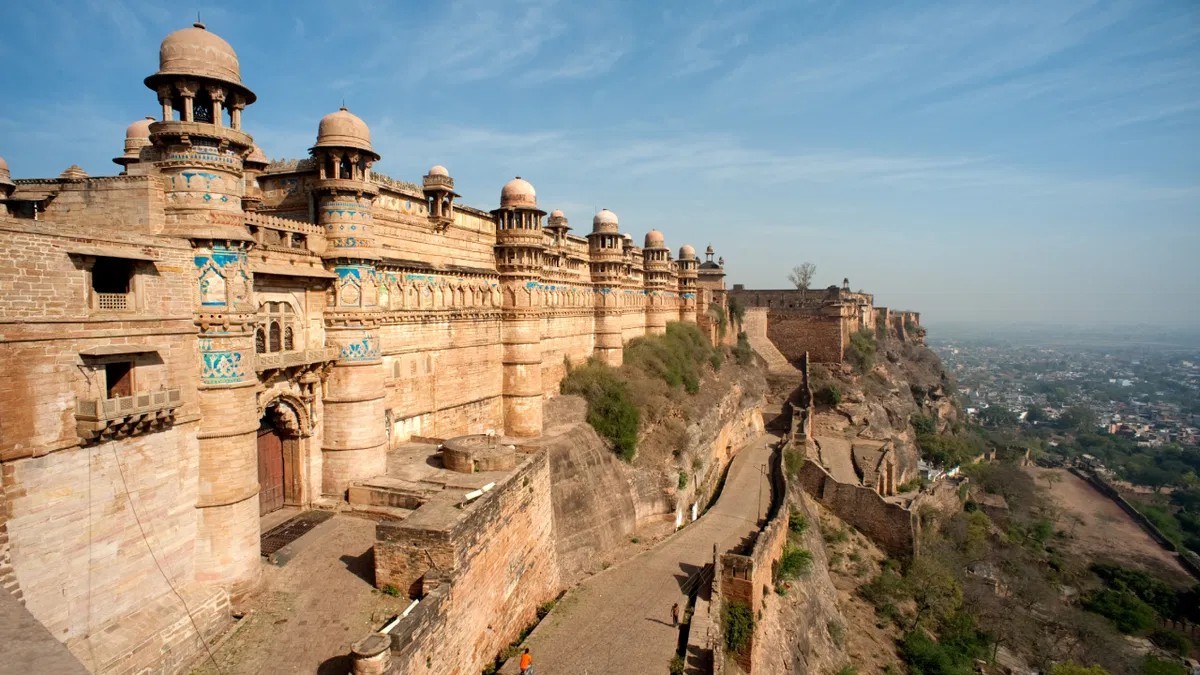
UNESCO tentative list

22.03.2024
UNESCO tentative list
|
For Prelims:About 6 new sites included in UNESCO's tentative list,Important points, |
Why in the news?
Recently, 6 new sites of Madhya Pradesh have been included in the tentative UNESCO list of World Heritage Sites (WHS).
Important points:
- These six sites include Gwalior Fort, historic Dhamnar rock-cut caves and Bhojeshwar Mahadev Temple in Bhojpur, rock art site of Chambal Valley, Khooni Bhandara-Burhanpur, Ramnagar and Mandla Gond sites.
- A proposal for 9 potential sites in Madhya Pradesh was submitted to UNESCO by the Madhya Pradesh Tourism Board. After examining these proposals, UNESCO approved 6 historical heritage sites.
- Earlier 4 sites were included in 2021, now the total number of sites under this temporary list becomes 10 by March 2024.
- Moreover, 3 sites of MP are already included in the permanent list of UNESCO.
- These include the Khajuraho Group of Monuments (1986), the Buddhist Monuments of Sanchi (1989), and the Rock Shelters of Bhimbetka (2003).
About 6 new sites included in UNESCO's tentative list:
Gwalior Fort:
- According to historians, the first foundation of Gwalior Fort was laid by the Rajput warrior Suraj Sen in the sixth century AD.
- After a checkered history of invasions, defeats and conquests, the famous Tomar ruler Man Singh ruled the fort in 1398 and built several monuments inside the fort complex.
- Known for its impenetrable walls, this fort is situated on the top of a hill, from where the surrounding view of the beautiful city can be easily seen and observed.
- With a 10 meter high wall surrounding the complex, the fort incorporates captivating and exquisite sculptures and remarkable feats of architecture in its construction.
Historic Dhamnar Rock-Cut Caves:
- Dhamnar Caves are located in Dhamnar village of Mandsaur district.
- This rock-cut temple site has 51 caves, stupas, chaityas, passages and dense habitations.
- It was built in the 7th century AD.
- There is a huge statue of Gautam Buddha in Nirvana posture at this site.
- There are 14 historically important caves on the northern coast, of which Bari Kacheri (Big Courtyard) and Bhima Bazaar are more popular among tourists.
- The Badi Kacheri is 20 feet square and consists of a stupa and chaitya. The verandah consists of a stone railing and wooden architraves.
Bhojeshwar Mahadev Temple:
- Bhojeshwar Temple, located about 28 km from the capital Bhopal, is dedicated to Lord Shiva.
- Built from a single stone, the huge linga in the sanctum sanctorum is 2.35 meters tall and has a circumference of about 6 meters.
- It is set on a 3-tiered sandstone platform 6 meters square.
- Due to its magnificent architecture it was given the title of 'Somnath of the East'.
- Raja Bhoj ordered construction on the hilltop in Bhojpur village between 1010 and 1053 AD, although the temple seems to have never been completed.
Rock Art Sites of Chambal Valley:
- The Chambal Basin and central India contain the world's largest rock art sites dating from different historical periods and civilizations.
- Spread across Madhya Pradesh, Rajasthan and Uttar Pradesh, these sites provide insight into ancient human habitation and cultural evolution.
- Spanning from the Palaeolithic to the historic period, rock art depicts scenes of daily life, religious rituals and hunting practices, and other depictions of prehistoric human life.
- Rock art sites in the Chambal Basin display a mix of artistic styles and cultural influences, reflecting the dynamic history of the region.
Kundi Bhandara:
- This unique water supply system 'Kundi Bhandara' is located in Burhanpur.
- Built about 407 years ago, this system is still operational today and is used by the people of the region.
- It was built by the then ruler Abdurrahim Khankhana in 1615.
Gond Statue:
- Ramnagar in Mandla district used to be the stronghold of Gond rulers.
- In 1667, Gond king Hriday Shah built Moti Mahal on the banks of river Narmada.
- Despite limited resources and technology, the five-storey palace was built as a demonstration of the king's strong will.
- Over time, two floors sank beneath the ground, but the three upper floors can still be seen today.
Source: Times of India